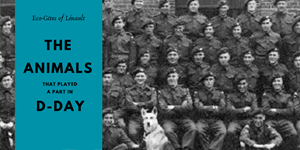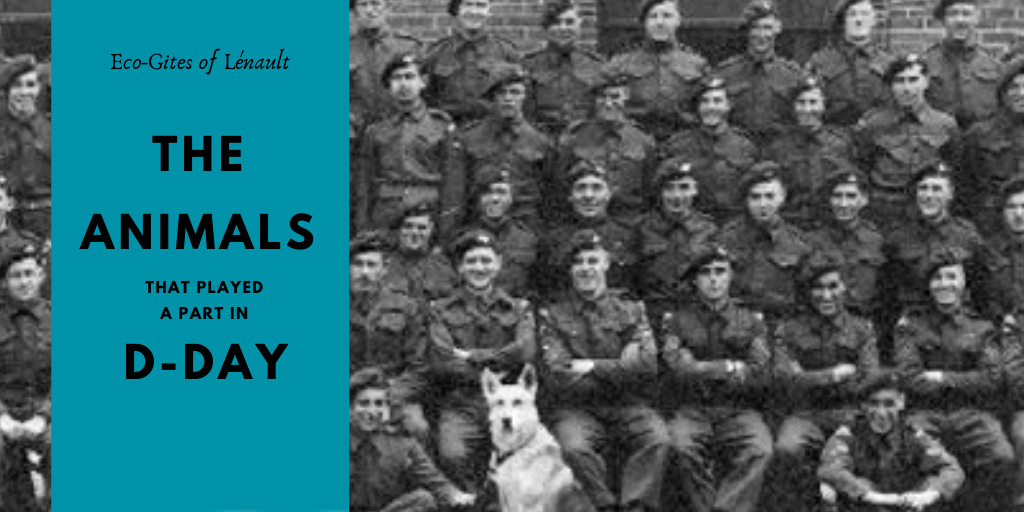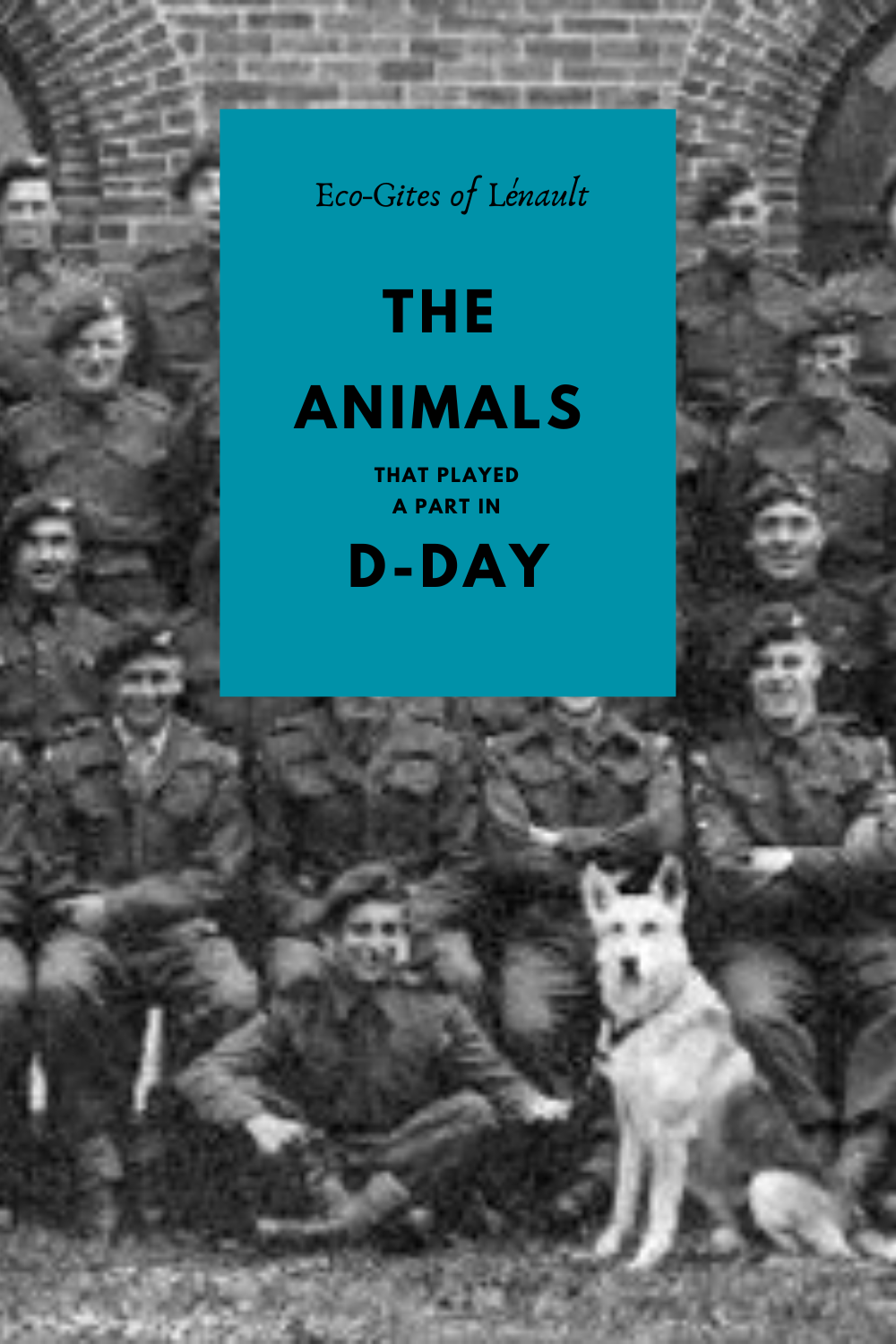Animals on D-Day

We hear much about the soldiers who landed in the D-day Beaches in Normandy on June 6th 1944 and the many stories they recounted ... but did you know than it was not only humans who played a role on D-Day? Various animals were also participants who have stories to tell.
Animals that played a Role in D-Day
Dogs
The first soldiers on Normandy soil on D-Day were parachutists who landed in various locations just after midnight ... and among the soldiers there were also dogs. These so called paradogs were trained to detect mines and act as an early warning system for approaching enemy soldiers. You can read more about them in these two blogs I previously wrote : Glen - the paradog who died on D-Day and The D-Day Dogs.

Pigeons
With the Allied Invasion Fleet under radio silence it was impossible to send messages back to the UK about how the invasion was advancing ... which is where pigeons came in. As well as the soldiers on the crossing there were also 6 homing pigeons. One pigeon, Gustav, returned with this message, the first information received by the allies back on the mainland: "We are just 20 miles or so off the beaches. First assault troops landed 0750. Signal says no interference from enemy gunfire on beach... Steaming steadily in formation. Lightnings, Typhoons, Fortresses crossing since 0545. No enemy aircraft seen." Later that day, another pigeon, Paddy, was released from Normandy with news of success of the landings.
Gustav was awarded the Dickin Medal for bravery (the animal equivalent of the Victoria Cross) with the following citation: "For delivering the first message from the Normandy beaches from a ship off the beachhead while serving with the RAF on June 6 1944." He was one of thirty two pigeons awarded the medal who carried messages during the Second World War. The medal can be seen in The Portsmouth D-day Museum.
Horses
In WWI some 2.75 million horse were used in battle and for transport by the Allied troops. Thankfully that number was greatly reduced to just over 6000 in WWII. No horses landed with soldiers on the beaches but they did still play a part on D-day and in the weeks afterwards during the Battle of Normandy. Many horses (and mules) were commandeered by troops who needed to move locations quickly or transport supplies when they did not always have the vehicles they needed. At Pegasus Bridge it was critical that reinforcements were made to the bridge before the Germans could mount a counter offensive. Moving the necessary heavy gear was made easier with the help of a French horse called George who was able to pull a cart loaded with equipment. His work whilst under fire ensured the bridge was retained but sadly there is no record of where George came from or what happened to him after his time helping the Allies.

George, the Normandy horse who helped on D-Day
Image credit - BBC
Major Stanley Christopherson of the Sherwood Foresters also used a horse to get himself to where he was meant to be. In his diaries he talks about how he could never have dreamt that on D-Day he would be galloping through the Normandy countryside on a frightened horse he had commandeered. But war throws up many surprises, not least for that unsuspecting horse who, the day before, was happily grazing in a field.
Cows
Fields of cows played a passive but still important role. Normandy was littered with land mines but if soldiers saw a field of cows they could be fairly sure that their field did not contain land mines. Cattle, being forever curious, would also often investigate anyone hiding in a field thus warning soldiers that the enemy could be nearby.
We remember the soldiers who fought on D-Day. Let us also never forget the animals who played a small, but significant, part in this epic day.
You can pin me:


